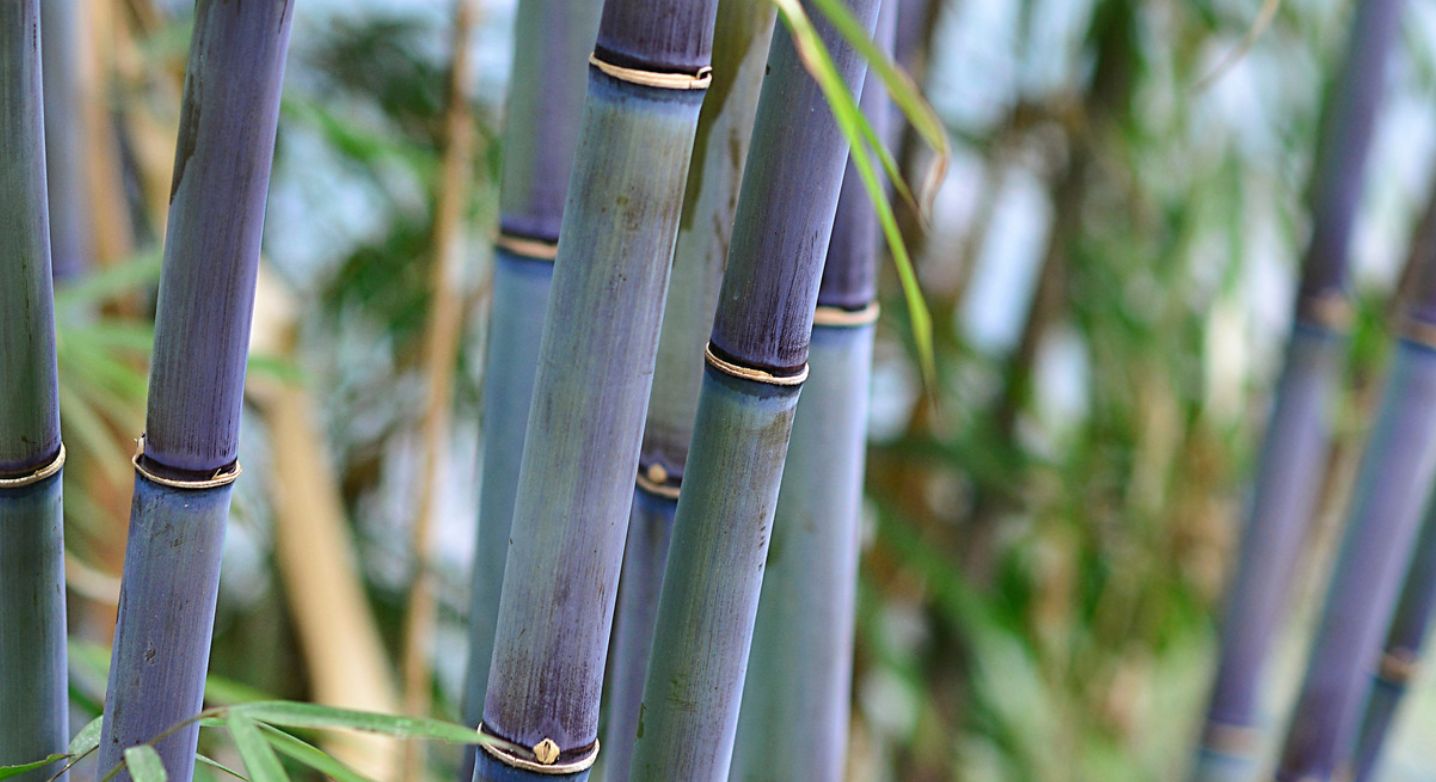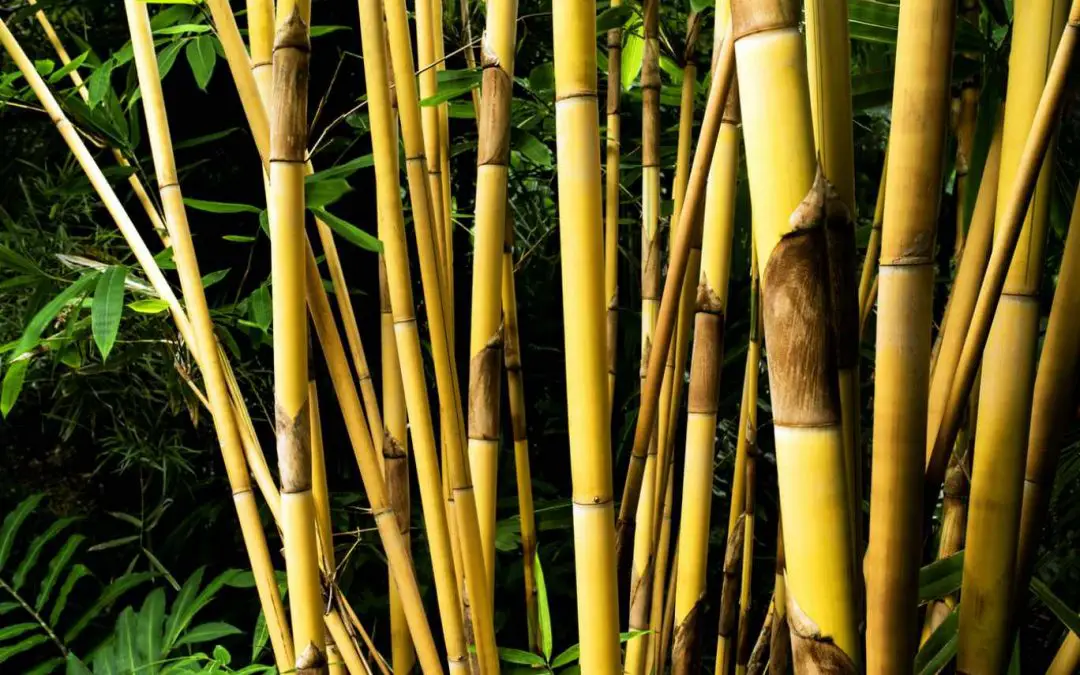Based on the flourishing popularity of our recent post on clumping bamboo species, we decided it would be a great idea to do a follow-up.
Bamboo has something of a lousy reputation in a lot of gardening circles. However, as with most cases of prejudice, bamboo’s infamy comes largely as a result of ignorance.
Many varieties of bamboo can spread quite aggressively. And many people think of it as invasive. But this problem is easily overcome with a good containment strategy or by planting a clumper instead of a runner.
Why clumping bamboo
The advantage of planting clumping bamboo is pretty clear. While running bamboo has the capacity to spread quickly and possibly take over your whole yard, clumping bamboo has much better manners. Their rhizomes don’t stretch out. Instead, they just bend upwards to form new shoots right away.
Keep in mind, the distinction between runners and clumpers is not simply black and white.
Most clumping bamboos will reach a maximize size, or footprint, and then stop spreading. For some species of Himalayacalamus, they might only grow a total of a few feet wide. A Bambusa specimen will often get 10 to 15 feet across. But there are also “open clumpers” which continue to expand outward indefinitely, always producing more shoots.
Factors like water, soil and sunlight will also affect how tightly or loosely a bamboo plant makes its clump. But at the end of the day, you can expect fewer problems in your garden and fewer arguments with your neighbor when you plant a clumping bamboo.
Climates for clumping bamboo
It’s important to understand that most (but not all) clumping bamboo is tropical. Running bamboo, by contrast, is generally temperate, meaning that it’s far more cold-hardy. That’s one of the main reasons people end up with running bamboo, because it can handle the freezing winter.
But some clumping bamboo is more tropical than others. Genera like Dendrocalamus and Gigantochloa can hardly handle any freezing. Most Bambusa and Himalayacalamus species are hardy to about 15º F. A Chusquea can usually survive temperatures as low as 0º. And then there’s Fargesia, which comprises the most cold-hardy varieties of any bamboo genus, despite their being clumpers.
10 More species of clumping bamboo species
Bambusa lako
Commonly known as Timor Black, this is an excellent alternative to the more popular black bamboo, Phyllostachys nigra. This tropical species is far easier to control, because it’s a clumping species. It also produces spectacular canes, up to 50 or 60 feet tall and easily 4 inches thick. New shoots come up bright green, but turn shiny, black with age. This is a tropical bamboo that cannot tolerate frost.
Bambusa malingensis
This popular species from Southern China, often called ‘Seabreeze’, is great in a variety of conditions. As the name suggests, it’s very tolerant of winds and salty air by the seaside. Its tight clumping habit and lateral branches also make for a dense and fast-growing privacy hedge, often growing up 30 feet tall or more. And Seabreeze happens to be one of the more drought-tolerant bamboo species. But like most varieties of Bambusa, it’s not especially cold-hardy. Temperatures below 20º F will usually result in frost damage.
Bambusa textilis ‘Gracilis’
The beauty and versatility of this bamboo has earned it the names Graceful Bamboo and Slender Weaver’s Bamboo. Tall, slender canes, forming in tight clumps, can get 30 feet tall, arching towards the top for a graceful aspect. Thin culm walls make the poles more flexible but less useful for building. Cold hardy to 15-20º F.

Chusquea culeou
Several cultivars of this species, all native to Chile, have become popular among American bamboo growers. They are somewhat exotic in appearance, and also adaptable to a wide range of climates, from 0º to 100º F. They can also tolerate wetter soil than most other bamboos.
‘Caña prieta’ has attractive upright culms that start out dark brown or black and gradually fade to yellow, but stay dark around the nodes. They grow 10 or 20 feet tall with culms 1 inch thick.
Chilean straight’ is similar to other cultivars but new shoots come up dark green or blueish before fading to yellow.
C. culeou ‘Scandens’ is taller than the others, growing up to 20 or 30 feet high, and arching over more at the top.
Dendrocalamus elegans
Native to the balmy climes of Thailand and Malaysia, this attractive species is one of the smaller varieties of Dendrocalamus. Thin culms, about 1 inch thick, have a silver-green color and grow about 15 feet tall. Leaves are feathery, but the foliage is dense, with a beautiful aspect. As far as tropical bamboos go, this one is relatively compact, making it a popular ornamental for warm climates where frost is not an issue.

Drepanostachyum khasianum
Closely related and often confused with members of the genus Himalayacalamus, this is a rare but beautiful bamboo. Its stunning colors have earned it the name ‘Purple Jade’. (See image above.) Young culms can take on various shades of violet and magenta, with a distinctive white ring around the nodal joints. The plant is happier — and more colorful — in cool, shady settings. They normally grow about 10 to 15 feet tall with culms 1-1.5 inches thick. Mature clumps can get about 10 feet wide. Cold hardy to about 15º or 20º F.
Himalayacalamus porcatus
Nepalese Blue, as it’s popularly known, is quite similar to the Himalayan Blue, but considerably smaller and more compact. Grayish white to light blue culms grow about 6 to 10 feet tall, and 1/2 to 1 inch thick. Mature clumps are only about 3 to 4 feet wide. The plant can be pruned to be even smaller and looks great in a pot or container. This species also tends to arch over more than its upright cousins. Like all Himalayacalamus, Nepalese Blue does much better in cooler climates with limited direct sunlight.
Gigantochloa sp. ‘Rachel Carson’
This is one of the most popular species from this tropical genus, with colorfully striped leaves and culms, sometimes white and even pink. Canes grow a modest 25 feet tall with large leaves that can provide a good privacy screen or an eye-catching centerpiece.
Schizostachyum brachycladum
Sacred Bali Bamboo, as it’s commonly referred, is another beautiful specimen from Southeast Asia. Bright yellow culms have a thin, dark green stripe, accompanied by deep green, bushy foliage, resulting in a very attractive aspect. (See image at the top of the article.) Canes are majestic and upright, growing 40-50 feet tall and 2-3 inches thick. Frost will damage it.
Thyrsostachys siamensis
This is also called Monastery Bamboo, Thai Bamboo or Umbrella Bamboo. This is a super tight clumper, making it a great choice in narrow spaces. It grows 20-30 feet tall, with slender, graceful leaves and upright culms, 2-3 inches thick. Canes are nearly solid and therefore excellent for building. Suitable in tropical and subtropical climates only.
Learn more
If you enjoyed learning about more clumping bamboo species, you might want to check out some of these other informative articles about bamboo horticulture.
FEATURED PHOTO: Schizostachyum brachycladum

























